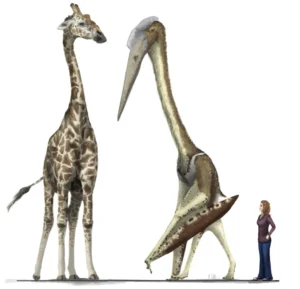|
In humans and bovids, cortical bone has been evaluated to withstand maximum stress. Hence, within the context of comparable loading regimes, the mechanical state of each sauropod model examined suggests that all skeletal pedal postures would most likely have resulted in mechanical failure (e.g., stress fractures).
This state would have been intensified when subjected to repetitive heavy loadings, as would be expected during normal locomotion, ultimately resulting in fatigue fracture in all digits. Being unable to support or move properly, the high probability of mechanical failure would have had a substantial impact on the animal’s survival.
The huge Quetzalcoatlus northropi lived 70 million years ago, stood as tall as a giraffe on the ground, more than five meters tall and weighed 250 kilograms. The Kori bustard is the heaviest living animal that can fly. Males weigh between 10 and 16 kilograms and the biggest up to 23 kg. For comparison, the wandering albatross has a larger wingspan, but only the biggest reach even 16 kg.
The impact with the moon shattered the lithosphere into plates which began creation of the Pacific Ocean seabed, and the plates of the seabed have been spreading apart 25 km/million years since the beginning of the Mesozoic, pushing back the surrounding coastlines of the land masses in fold mountains and powering earthquakes and volcanic eruptions around the “ring of Fire”. Formation of the Atlantic Ocean began at the end of the Mesozoic, when a meteor shattered the lithosphere creating stress cracks north and south from the impact point which have been spreading apart 25 km/million year at the mid Atlantic ridges for 65 million years.
|
Atoms are electrons and positrons 2d & 3d photon quanta with opposite and like polarity to the fields of stars and planets




